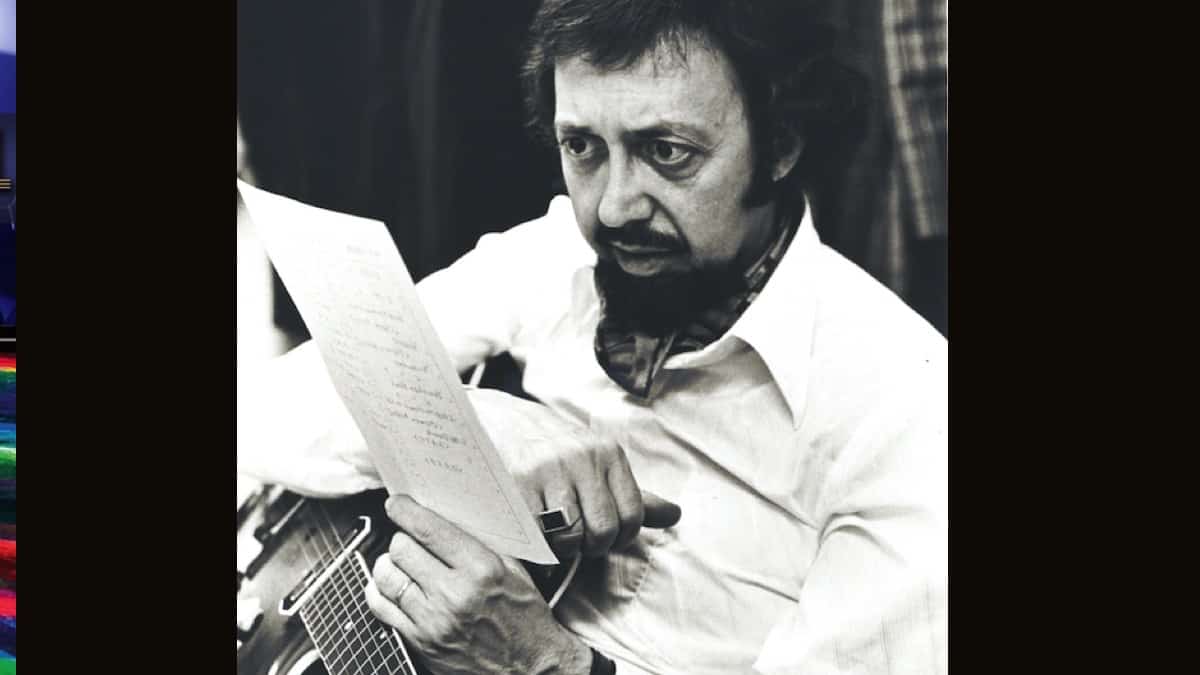Jazz Guitarists
Remembering Barney Kessel’s Music World

In early 1970, Frank Hamilton heard that Barney Kessel was opening a music store, Barney Kessel’s Music World…so he gave him a call.
I called him and his general manager, Jaques Robinson, tucked my copy of Who’s Who in America with my entry under my arm, and met with them at their new location on Selma and Vine Street in Hollywood.
Barney was gracious, warm and with his characteristic sense of humor, welcomed me aboard. I was given a little room, very nicely painted, and would start soon with my list of students, some of who were provided for me.
At one meeting, which was not usual since he was out of town on gigs, Barney told me about how he worked. He had musician contacts all over the world, those he liked to work with. This saved him from having to foot the bill to carry a band.
He told me that he found it convenient to do studio work behind Elvis, playing bugooloo beats or working on Spaghetti Western film scores as we did when he hired me to play autoharp on a date with James Burton, Shaky Jake Morton, and himself.
That date was notable because Shaky Jake was a blues harmonica player not used to studio work. There was one cue in which the music had to be dialed under to suit the drama on the screen but when we got to the end of the cue, Shaky would consistently end it with a flourish. After all, an ending is an ending! Sweets Edison was in the control booth and got on the horn and started chewing Shaky out for not knowing more about music while the rest of us were convulsed with laughter.
Jazz critics are often a pain in the butt for giving a hard time to musicians who do the studio. They don’t understand about musicians having to pay the bills and jazz generally with a dollar will get you a cup of coffee. Even if you’re Barney. (Editorial comment is mine, not Barney’s.)
He did well, though, and gleefully told some stories. When he visited his hometown of Muskogee, to illustrate my point about jazz, one of his relatives said to him, “Son, when you gonna’ learn how to play geetar”. That was Roy Clark territory.
One morning, he joyfully told us that he had been out the preceding night to the watering hole he had to go to with friends, an Irish-oriented restaurant called “Blarney Castle”.
I would teach on Friday afternoons which was a frustrating experience since while I taught, in the main room there was a jam session going on with Barney and his friend Howard Roberts. Of course, I wanted to be in the main room listening. I had heard that these sessions were tinged with irony because during the week they would both be critical of each other’s playing but that was all resolved on Friday Afternoon.
The store did well because Barney and Jacques had the foresight to give the upstairs over to Milt Owen, a legendary repairman. Many luminaries came to Milt such as Glen Campbell. Some of them, such as Lowell George became my students for a short time. Karla Bonoff and her sister Lisa were some of my best and consistent students there.
The store did well under Jacques’ management and Barney’s promotion. The environment was professional and attracted many clients who were active in the music business in Hollywood at that time.
Barney maintained a gracious manner with a wonderful sense of humor and charismatic charm. Jacques, a clarinetist, was the ideal manager, quiet, immaculately dressed, and perfectionistic which allowed Barney to be his ebullient self. I always admired Barney’s treatment of people and many musicians would do well to emulate Barney’s charitable and considerate attitude.
Subscribe to Jazz Guitar Today – it’s FREE!
-
Jazz Guitar Lessons2 weeks ago
New JGT Guitar Lesson: Analyzing “Without A Song”
-
Jazz Guitar Lessons4 weeks ago
New JGT Guitar Lesson: Considering “Falling Grace”
-
Artist Features1 week ago
New Kurt Rosenwinkel JGT Video Podcast – July 2024
-
Artist Features3 weeks ago
JGT Talks To Seattle’s Michael Eskenazi



















